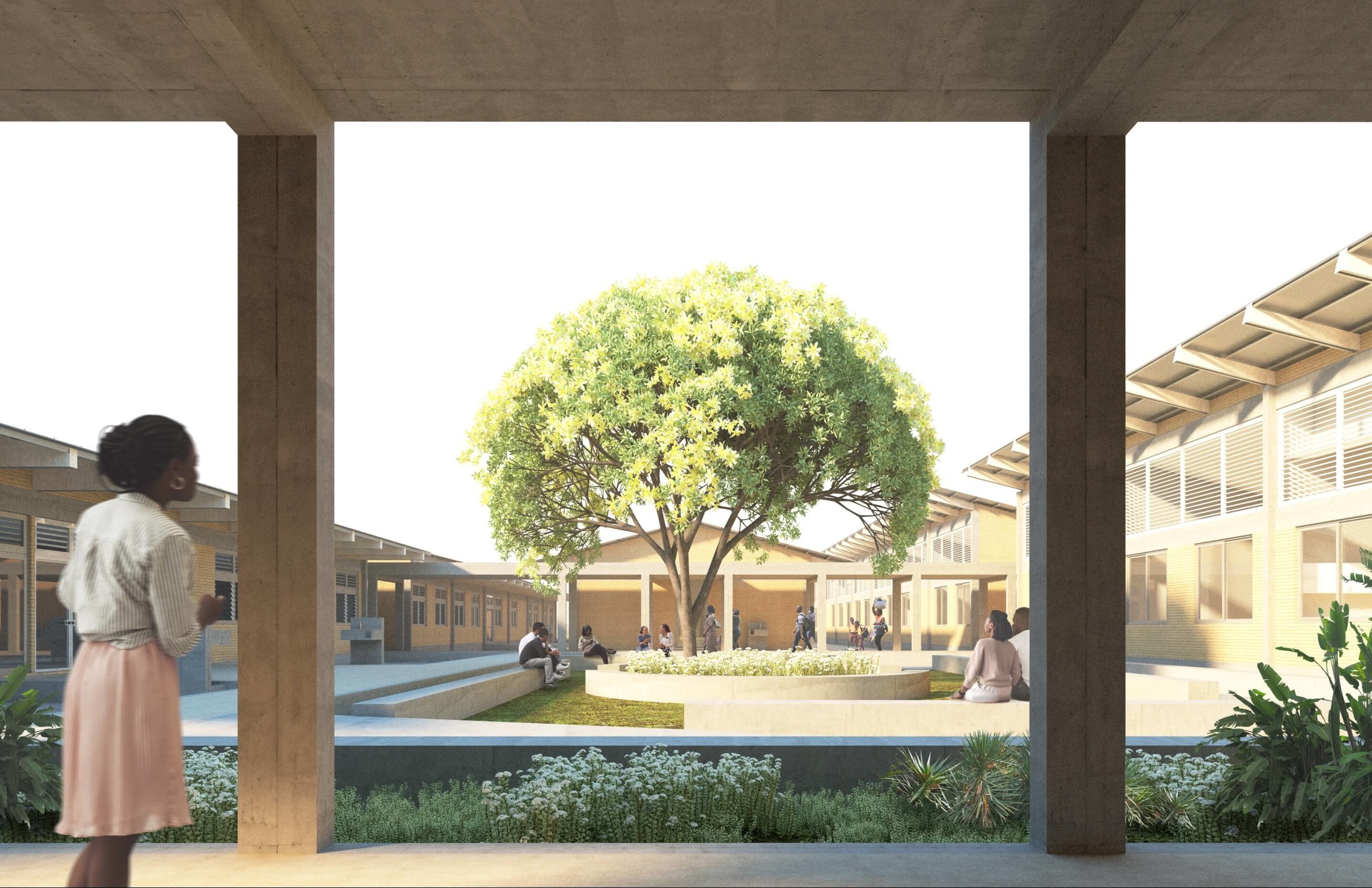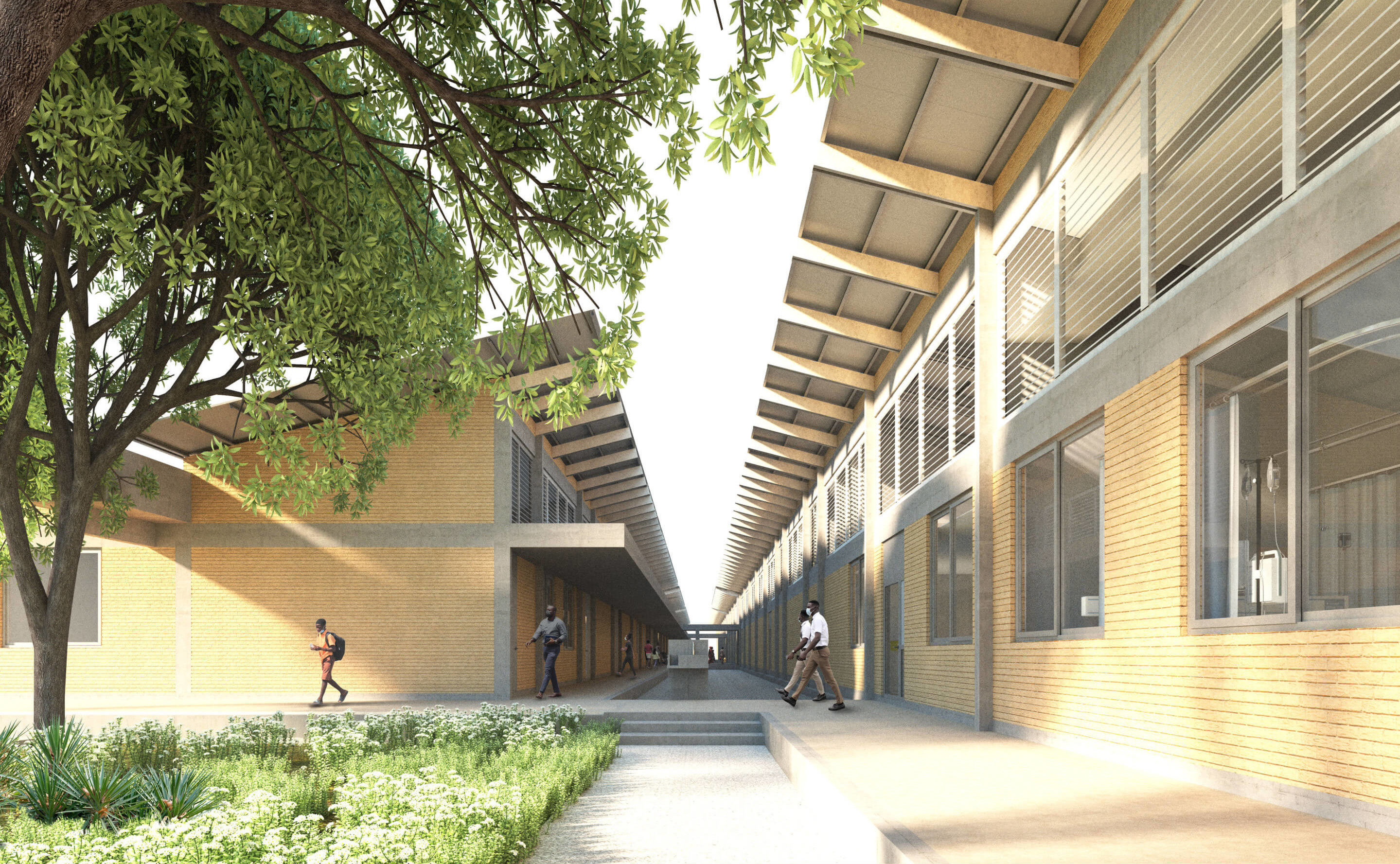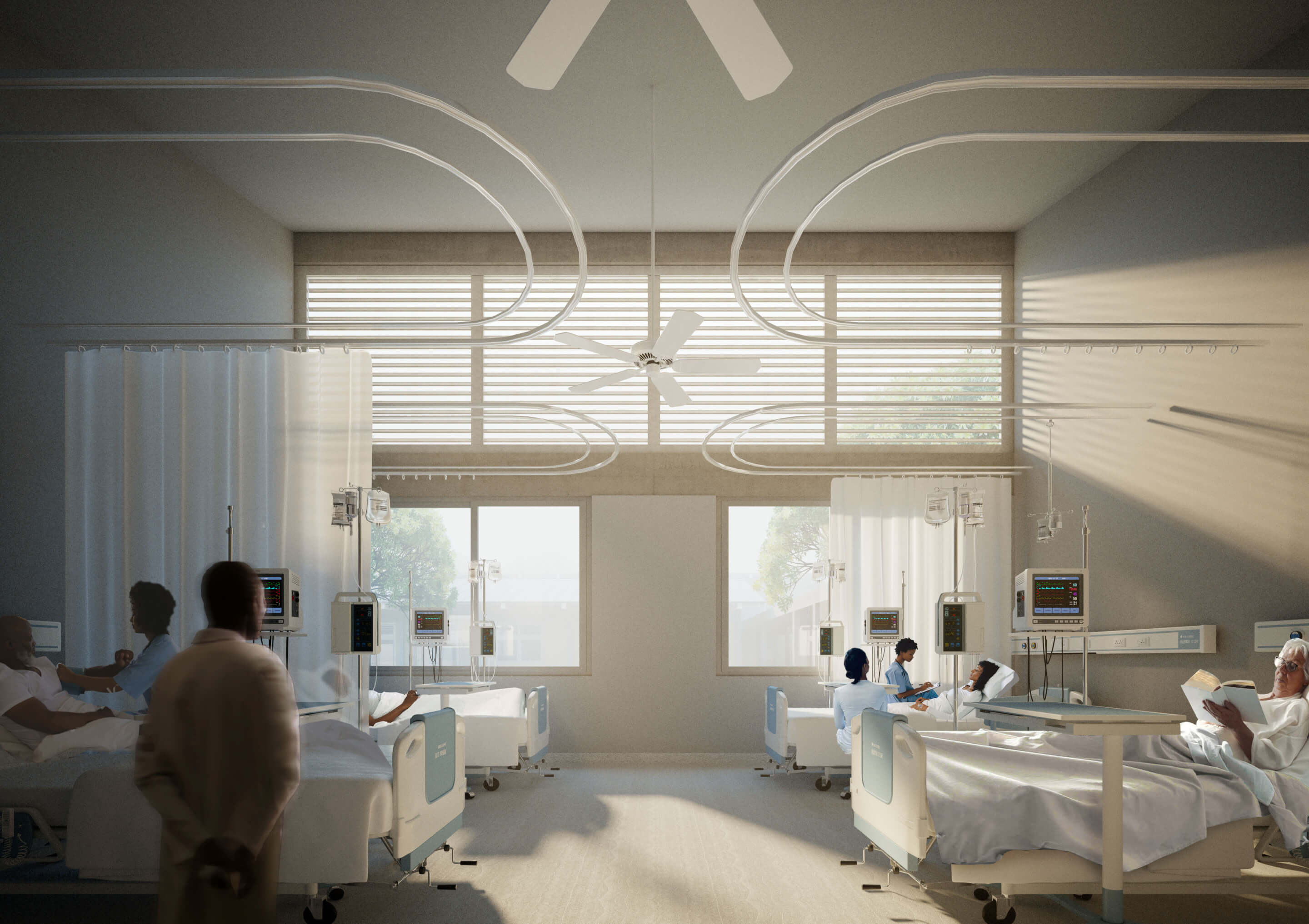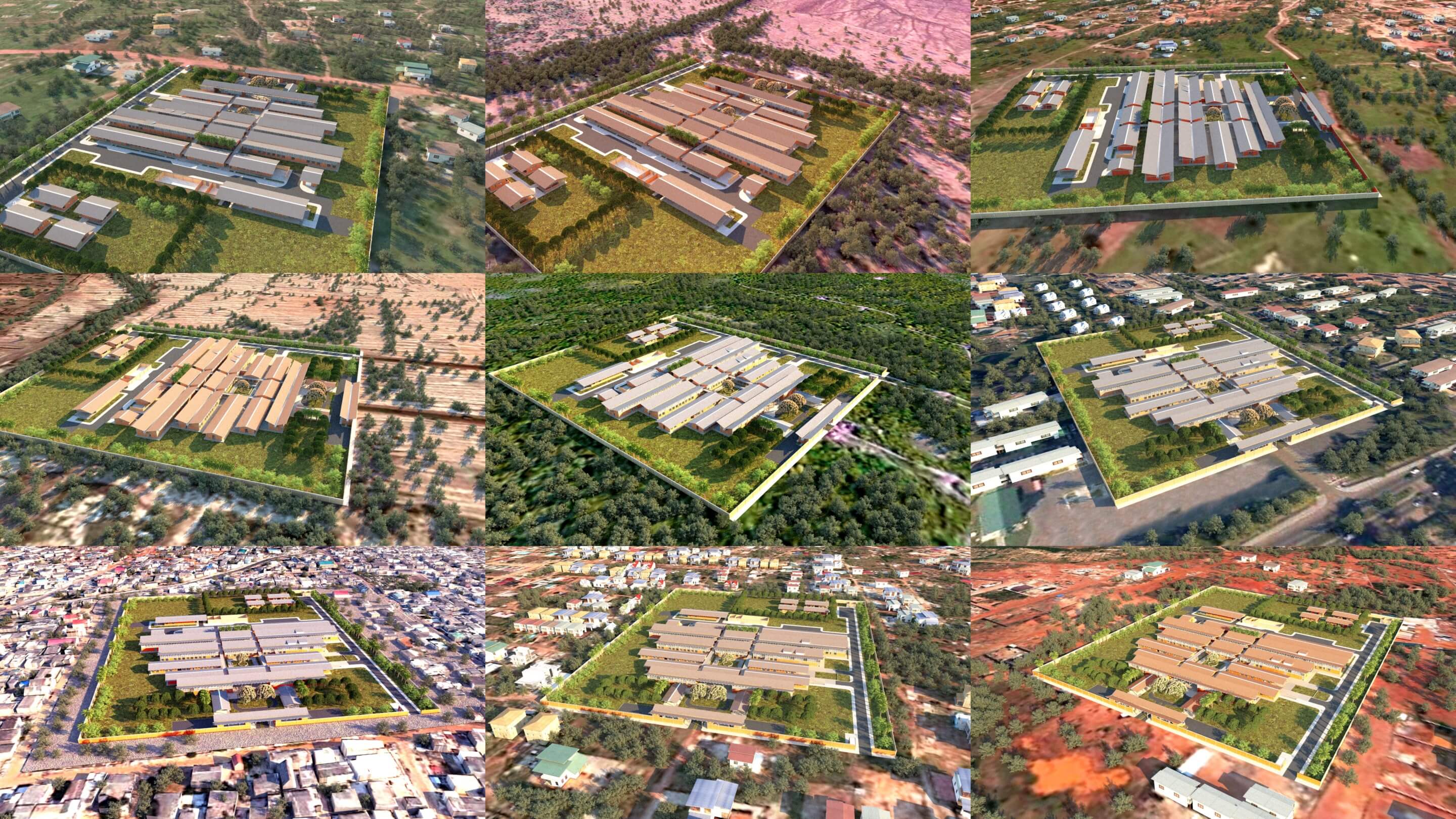Ghanaian President Nana Addo Dankwa Akufo-Addo was on hand earlier this week at a sod-cutting ceremony in the West African country’s Ashanti region to help kick off the official launch of Agenda 111 (previously Agenda 88), a nationwide healthcare infrastructure initiative first announced in April 2020 that will, in the words of Akufo-Addo, “lead to Ghana becoming a Centre of Medical Excellence and a destination for medical tourism.”
In total, the ambitious scheme involves the construction of 111 new healthcare facilities including 101 district hospitals, a pair of psychiatric hospitals, seven regional hospitals, and the redevelopment of an existing psychiatric hospital in the capital city of Accra. Adjaye Associates, commissioned by the Hospital Infrastructure Group on behalf of the Ghanaian government, has been tapped to design all 101 district hospitals. Led by RIBA Royal Gold Medal-winning Ghanian-British architect David Adjaye, the firm, in addition to its London and New York City offices, also maintains a studio in Accra.

Envisioned as welcoming, greenery-laced one-story campuses that eschew the sterile and oft-disorienting nature of traditional medical complexes, the 100-plus district hospitals will all follow roughly the same design, whether realized in urban or rural locales. However, each will be highly adaptable to meet the unique geographic conditions of each individual setting. An Adinkra symbol representing cleverness and the ability to thrive in varied and sometimes challenging conditions, the Denkyem (African Dwarf crocodile) served as a central point of inspiration for the flexible design, which relies on prefabricated construction techniques and natural, locally sourced materials for an efficient, quick build process.
“Ensuring that each hospital reflects its own locality, the main envelope of each building is comprised of stabilized interlocking earth brick creating an earth-based infrastructure,” Adjaye explained to AN in a statement. “The bricks, made from locally sourced mud, are nontoxic, sound resistant, insect resistant and fire-resistant, as earthen walls don’t burn–allowing for architecture to further mediate within the environment as a space of wellness.”

The program of each individual district hospital constructed as part of Agenda 111 will also largely be the same and include pharmacies, maternity and pediatric wards, emergency care facilities, labs/diagnostics, surgery wards, physical therapy centers, outpatient services, and more. A range of auxiliary structures—waiting pavilions, family and doctor residences, mortuaries, and waste management facilities among them—will complement the main primary care components.
A spacious central garden will anchor every low-slung hospital while smaller public green spaces fan out throughout the entirety of each campus to “provide an overall atmosphere of healing crucial for patients,” the firm explained. Branching out from the central garden along an easily navigable central spine, patient wards will be positioned on the perimeter to ensure maximum natural light and open-air flow. These portions of the complex will be topped with butterfly roofs to further maximize cross ventilation and natural night while facilities that require more controlled environments, including surgery wards, can be differentiated by their gabled roof structures that better shield the building envelope from the elements. Both will collect rainwater and “provide an insulated shell to minimize heat gain on the building interiors” per the firm.

“The overall organizational strategy of the campus and the structure of each building allows the green-filled public spaces to weave throughout the campus, offering patients and their families dignified moments of reprieve within nature,” Adjaye elaborated. “Through ecologically designed responsive systems that work with the elements of air, water, nature and land—such as ensuring natural light, open-air ventilation, and proximity to green spaces—the hospital and the natural environment come together in a moment where architecture meets healing.”
Joining Adjaye Associates on the Agenda 111 district hospital design team are, among others, Titan Biomedical Engineering, Brix Landscaping, design coordinator Sutherland & Sutherland Architects, and Global Engineering & Technology in role of electrical and mechanical engineer. Contractors will vary by location.

“By approaching the hospital as more than just a place for the provision of medical services, the design scheme aims to unlock the potential of this ambitious initiative by repositioning the hospital as a piece of community infrastructure that embodies sustainability, efficiency, and generously provides green spaces to facilitate wellness and healing,” added Adjaye.
As reported by state-owned Ghanian news source The Daily Graphic, the government estimates that roughly 25,000 workers will be employed during the design and construction phases of Agenda 111; once completed, the new facilities are expected to employ an estimated 20,000 health care professionals, which will put a sizable dent in the country’s unemployment rate.











